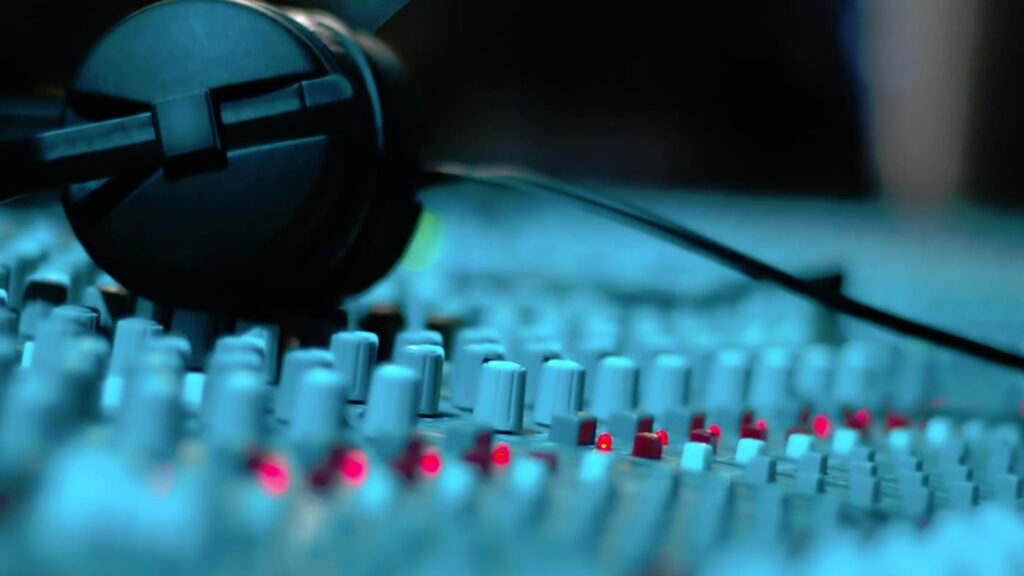Understanding Post-Production Audio for Filmmakers: From Set Sound to Final Mix
For many emerging filmmakers, the visual language of cinema takes center stage. But just beneath the surface of a great film lies another critical layer: sound. Audio in film is not just a technical component—it’s emotional, narrative, and immersive. And yet, many first-time directors or producers find themselves confused when terms like location mix, score, sound design, sync licensing, and final mix start getting tossed around in post.
In this article, we’ll break down the distinct layers of post-production audio, helping you understand what each one is, when it happens in the workflow, who does it, and how it serves your story.
1. Production Sound: The Sound Mix on Set
What It Is:
This is the audio recorded live on set during filming—dialogue, ambient noise, footsteps, props, and sometimes even basic room tone.
Who Does It:
A production sound mixer (also called a location sound recordist) captures this audio, often with the help of boom operators and lavalier mic setups.
Purpose:
To capture clean, usable dialogue and sound that matches the action on camera. In a perfect world, this dialogue will be clean enough to use in the edit. However, the reality is that most films still require substantial sound cleanup or ADR (Automated Dialogue Replacement) in post.
Tip for New Filmmakers:
Hire a good sound mixer. Bad sound on set is one of the hardest things to fix in post.
2. The Film Score
What It Is:
The score is the original instrumental music composed specifically to accompany the narrative arc, themes, or emotional beats of your film.
Who Does It:
A composer writes and records the score, often collaborating with the director closely to hit key emotional and narrative cues.
Purpose:
To enhance the emotional tone, underscore action or tension, and provide a cohesive musical identity across your film.
Tip for New Filmmakers:
Start early. Composers can begin crafting themes while you’re still editing. Give them rough cuts and storyboards where possible.
3. Sound Design
What It Is:
Sound design is the creative process of crafting and layering non-musical sounds to enrich the film’s world. This includes environmental sounds (wind, traffic), foley (footsteps, fabric rustling), and special effects (monster roars, sci-fi tech noises).
Who Does It:
A sound designer, sometimes supported by a foley artist and sound editors, builds this world using both recorded and synthetic sounds.
Purpose:
To make the world believable, immersive, and textured. Good sound design is often “felt” more than noticed—but when it’s missing, the film feels flat.
Tip for New Filmmakers:
Even the smallest indie film benefits from thoughtful sound design. Think about how the environment and objects in your story “sound” as well as how they look.
4. Sync License Music (Pre-Existing Songs)
What It Is:
These are existing songs that you license for use in your film—whether they’re famous tracks or indie artist deep cuts.
Who Handles It:
Music supervisors handle sync licensing, negotiating usage rights with rights holders (publishers and master owners).
Purpose:
To set a mood, establish time and place, or deliver a moment of impact or emotional resonance with a familiar tune.
Tip for New Filmmakers:
Just because you used a song in your edit doesn’t mean you can keep it. Plan for music clearance early, or work with a music supervisor to find affordable alternatives.
5. Original Songs for the Film
What It Is:
These are songs—often vocal and lyric-driven—written specifically for your film. They may play over end credits, represent a character, or serve as a narrative moment in the story.
Who Creates It:
Songwriters and performing artists may collaborate with your composer or music supervisor to write something original to fit your film.
Purpose:
To give your film a unique musical fingerprint. Original songs are often eligible for award consideration (e.g., Oscars, Golden Globes) and can help market your film.
Tip for New Filmmakers:
If you’re working with emerging artists or producing on a budget, offer creative placement in exchange for favorable licensing terms.
6. The Final Mix (Re-Recording Mix)
What It Is:
This is the final blending of all your audio elements: dialogue, score, sound design, effects, and music. Levels are adjusted, panning and spatial positioning are refined, and the film is “mixed” to deliver a polished, immersive sound experience.
Who Does It:
Re-recording mixers—highly specialized audio post professionals—work in dedicated mixing studios, often with input from the director and producer.
Purpose:
To ensure that every sound is balanced, nothing competes unnecessarily, and that your film translates well in every environment—from a phone speaker to a Dolby Atmos theater.
Tip for New Filmmakers:
Always allocate time and budget for the final mix. It’s the difference between a professional-sounding film and something that feels amateur, regardless of how great your visuals are.
Final Thoughts: Crafting the Sonic Identity of Your Film
Think of your film’s sound as its soul. Picture watching your favorite movie muted—how much of the emotion, tension, and atmosphere would vanish? Now imagine building that sound world intentionally from the ground up. That’s what post-production audio is all about.
As a filmmaker, you don’t need to master all these disciplines, but you do need to understand them, respect them, and budget for them. Surround yourself with talented audio professionals, and give them the space to help your film truly sing.
Need Help Navigating the Audio Process?
At Noise Gallery Media, we specialize in original music, sound design, and sync licensing tailored for independent filmmakers. Visit us online to explore our music library or schedule a free consultation to discuss your film’s audio needs.
📞 Book a 30-minute call today and make sound your secret weapon.

